The Church Bible Publishers KJV Journaling Bible expands the outer margins of the Notetakers to provide the most note-taking space for any wide margin KJV, with 3.5-inch margin in the outer margin. It also includes a large print red-letter text, making it ideal for journaling, study, and preaching. It’s available in black ironed calfskin, model # 415RL C1BK
Church Bible Publishers provided this Bible in exchange for an honest review. I was not required to give a positive review, only an honest one. All opinions are my own.
_________________________________________________________
This book is available at Church Bible Publishers
_________________________________________________________
Table of Contents
Video Review
Cover and Binding
The cover is black ironed calfskin. It’s smooth from the ironing process, but it does have a little bit of grain. It’s highly flexible. It’s stitched around the perimeter with black thread.
The front of the cover has no printing. The spine has HOLY BIBLE, AUTHORIZED KING JAMES, and CBP printed in gold. The spine includes 5 raised ribs. They’re slightly flexible, which makes the spine bend a little. This allows the pages to open flatter, but it’s not as flat as my Notetakers. The text does bend into the gutter a little bit.
The liner is an edge-lined synthetic material. The binding is Smyth sewn. The edge-lined tab was a little stiff out of the box, but it still stays open in Genesis.
It includes two black ribbons and black and gold head/tail bands. The ribbons are 1/4″ wide and 5″ long. They’re easy to pull to the corner to open the pages. They’re thin enough to not cause trouble when reading or preaching. The overall size is 10 x 7.5 x 2″. It weighs 4 lbs, 5 oz. It’s about the size of a large wide margin Bible. This size and weight can make it a little too floppy and heavy to handle. That’s to be expected from a Bible this large. It’s great for use at a desk or pulpit.
Paper
The paper is around 33-34 gsm. It’s ivory in color. It’s very opaque and it has a smooth texture. I had no trouble turning pages. It does have a touch of glare under direct light, but it isn’t enough to annoy me (and I’m picky about my paper). The edges are a gold-gilt.
The paper is good for Pigma Microns and other types of archival markers. I used a 005 fine tip black for notes. I’m impressed with how well it takes the ink and how little show-through it has. The paper is good for taking notes, writing your thoughts, drawing, etc. It’s also good paper for coloring pencils and other types of dry highlighters. It works for art-journaling if you use a good quality gesso or use a limited number of art supplies. I recommend testing any tools and supplies on the paper in the back first.
Typography
The text is presented in a single column verse-by-verse next to an extra-wide outer margin. The text is separated from the margin by a verticle line. The header includes the book name and chapter number in the outer margin. The footer has the page numbers under the column-separation line.
The typeface is 11-point. It’s dark and sharp. The print quality is highly consistent throughout. This is a red-letter edition. The red is also dark and consistent. This is the best red-letter I’ve seen in the Notetakers setting. It doesn’t include self-pronouncing marks. It does place supplied words in italics. This is an excellent text for preaching or teaching.
It has around 10 words per line with a good amount of space between the line. The text never feels cramped or crowded. There are several places where it has extra space between the words. It doesn’t have line-matching on purpose, but most of the lines on both sides of the page match except where a new chapter starts. The paper is opaque enough that is doesn’t have much show-through either way.
The outer margins are 3.5″, making the CBP Journaling Bible the largest margins in any KJV in production. This makes the Journaling Bible an excellent Bible for journaling, writing sermon notes, outlines, insights into the text, references, bullet points, adding your own commentary, adding your own studies, adding artwork, etc.
The inner margin has been reduced to just over .25 from the Notetakers’ .375″. This makes the text bend a little further the gutter, making it slightly more difficult to read in the bend. It isn’t actually difficult to read, though. The top and bottom of each page have .5″ margins, which is enough room for small write notes, definitions, topic names, page summaries, etc.
Other Pages
The Journaling Bible includes the same material in the front as the Notetakers. This includes the presentation and family pages. They’re printed on thick paper and include the family record of the husband and wife, children, marriages, grandchildren, and deaths. Most of the pages include blue and gold highlights. The page for deaths has black and gold highlights.
It also has the Translators to the Reader and the Epistle Dedicatory to James. I always like to see the Translators to the Reader included. This is an important document that every KJV reader should be familiar with.
Concordance
Unlike the Notetakers, the Journaling Bible has included a concordance. The concordance is 196 pages. It has two columns in a good size print and it has a 1.25″ outer margin, which is great for adding more references. At the end of the list of references are usually a few more references without the excerpt. Not all include the excerpt, but most do. This is an excellent concordance for study and sermon prep.
Here’s a list of example entries with their number of references to help you compare:
- Christ – 14
- Christian – 3
- Faith – 122
- Faithful – 57
- Faithfully – 4
- Faithfulness – 10
- Faithless – 4
- God – 61
- God (an idol) – 20
- Goddess – 4
- Godhead – 3
- Godliness – 14
- Godly – 14
- God Save the King – 1
- Praise (n) – 41
- Praise (v) – 26
- Pray – 45
- Prayer – 39
Maps
It has 15 full-color Cambridge maps printed on thick non-glossy paper. The annotations on the maps are bold and dark. They can be a touch difficult to read against the bold colors of the maps, but they are usable. They include cities, routes, Scripture references, distance, mountains, territorial expansions with dates, topography, kingdoms, battle sites, locations of events, addressees of Pauline epistles, etc. Like the Notetakers, this one does not include the index to maps. I do think a map index is a helpful tool and I’d like to see it added back in.
Maps include:
- The Biblical World of the Patriarchs
- Palestine: Political Regions
- The Route of the Exodus
- The Twelve Tribes of Israel
- Kingdoms of Saul, David & Solomon
- The Divided Kingdom: Israel & Judah
- The Assyrian Empire
- The Babylonian Empire
- The Greek Empire
- Old Testament Jerusalem
- New Testament Jerusalem
- The Ministry of Jesus
- The Missionary Journeys of Paul
- The Spread of Christianity
- Modern Israel
Comparisons
Here’s a look at how the CBP Journaling Bible compares to several wide margin editions. For the zoomed photos, I’ve placed the Journaling Bible at the top.
CBP Notetakers
The Notetakers has the same materials and design, but with a 2.5″ margin instead of a 3.5″. It does have a slightly larger inner margin. It does not include a concordance. The Notetakers is a great choice for everyday use. They make a great combo.
Cambridge Concord Wide Margin
The Cambridge Concord Wide Margin is based on the Concord. It’s a reference edition with an 8-point font. Mine has 38gsm paper. The newer editions use 40gsm. It has lots of pages in the back for notes and a concordance.
Schuyler Canterbury Wide Margin
The Schuyler Canterbury Wide Margin uses the Canterbury layout. It’s a red-letter edition with references and a 9.5-point font. The paper is 38gsm. It has pages in the back and a concordance.
Allan Brevier Clarendon Wide Margin
The Allan Brevier Clarendon Wide Margin uses the text of the Brevier Clarendon. It’s a reference edition with an 8-point font. It has thick paper made for writing. The paper in my older edition is 38gsm, but the newer editions have even thicker paper. It also has lots of pages in the back for notes.
Thomas Nelson Large Print Journaling Bible
The Thomas Nelson Large Print journaling Bible is a much smaller Bible and it has a similar layout. It’s a large print version of the typical journaling Bible with cream paper and 2″ margins. The paper is great for notes. It has a bonded leather cover and a paste-down liner. It’s a good option to get started in journaling.
Conclusion
Church Bible Publishers’ KJV Journaling Bible is an excellent Bible for adding your thoughts, word studies, sermon outlines, artwork, and lots more. It has the same text as the Notetakers, so you can have multiple versions for different purposes. I find the extra-wide margins to be even more comfortable for writing. The extra paper does equal another pound of weight, but if you plan to leave it on a desk or pulpit, then I think the weight is worth it. There are several good wide margin and journaling Bibles available, but none have the writing space this one has. It’s a well-made Bible and it’s especially good at its price-point. If you need lots of note space, the CBP Journaling Bible is worth a look.
_________________________________________________________
This book is available at Church Bible Publishers
_________________________________________________________
Church Bible Publishers provided this Bible in exchange for an honest review. I was not required to give a positive review, only an honest one. All opinions are my own.

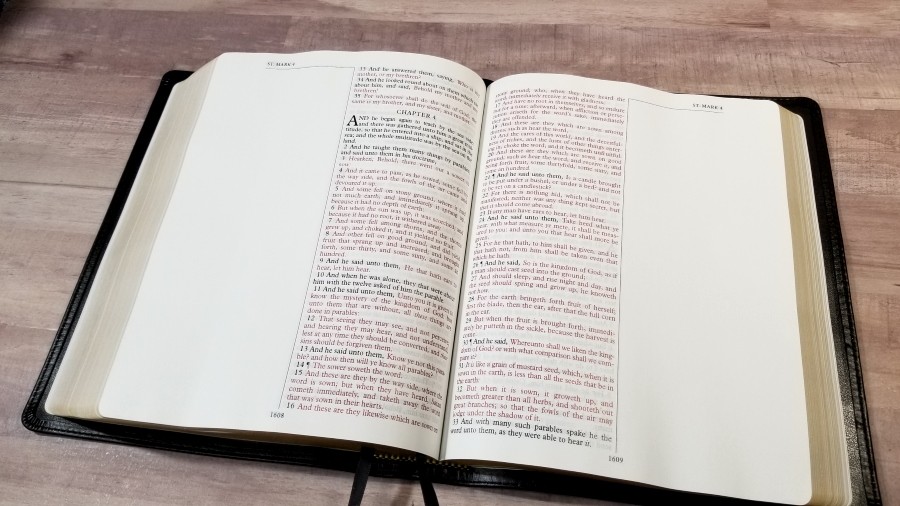
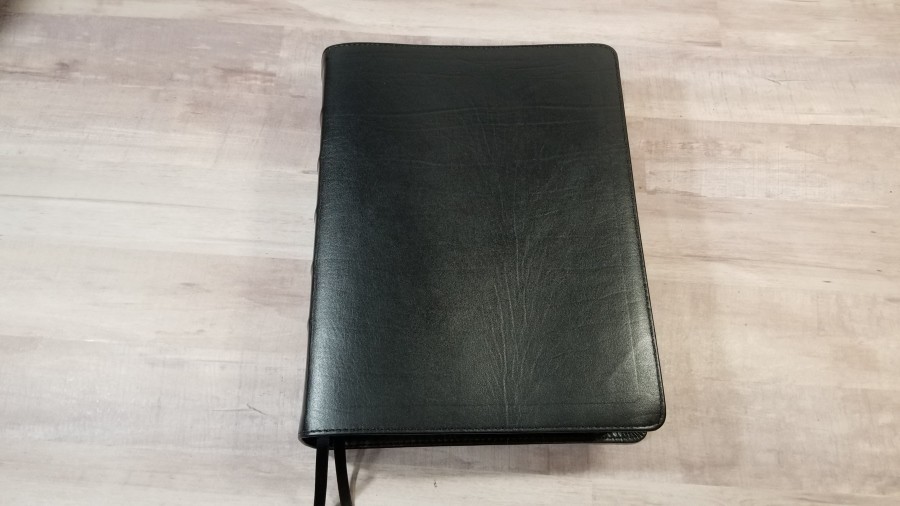
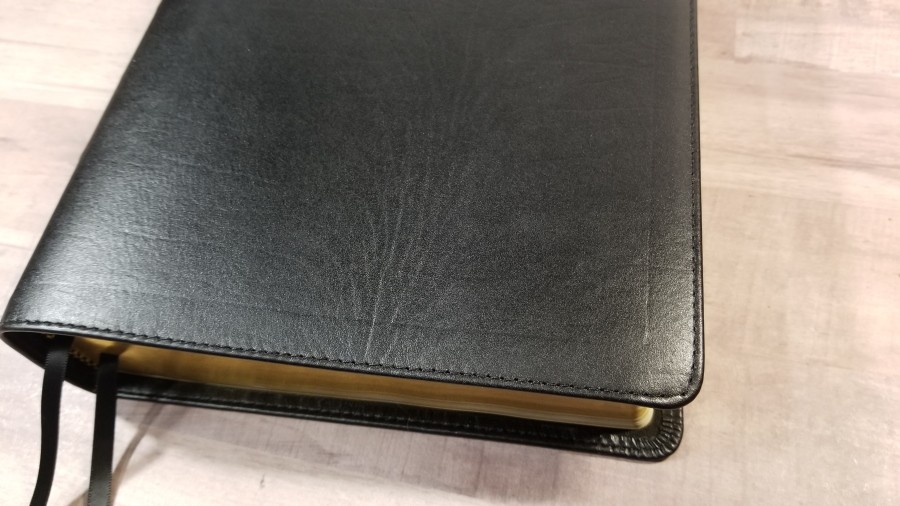
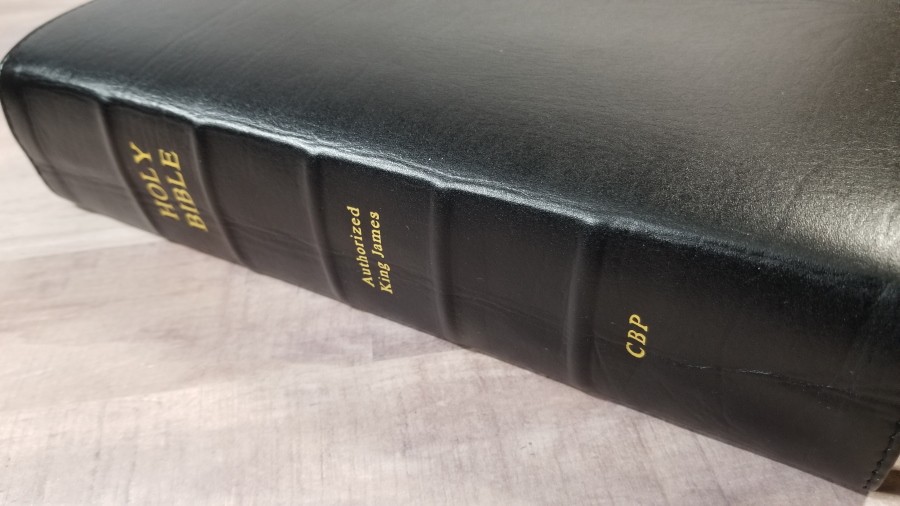
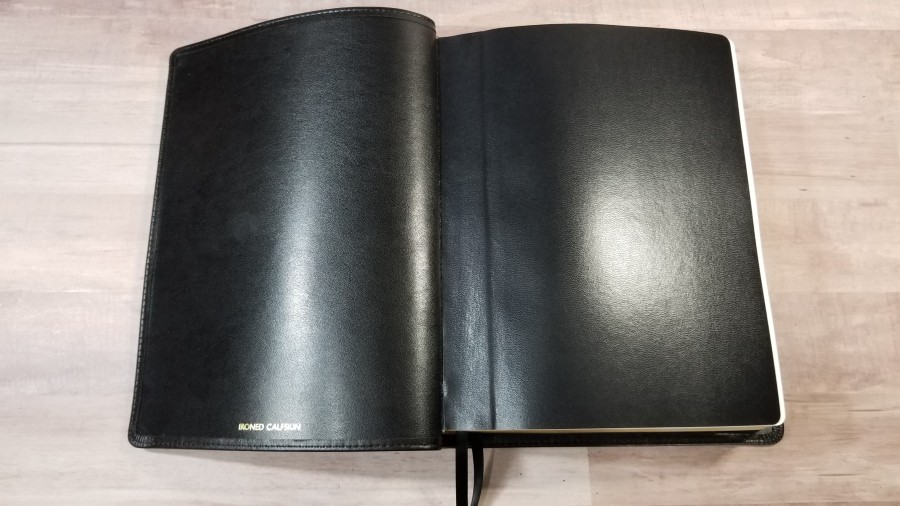
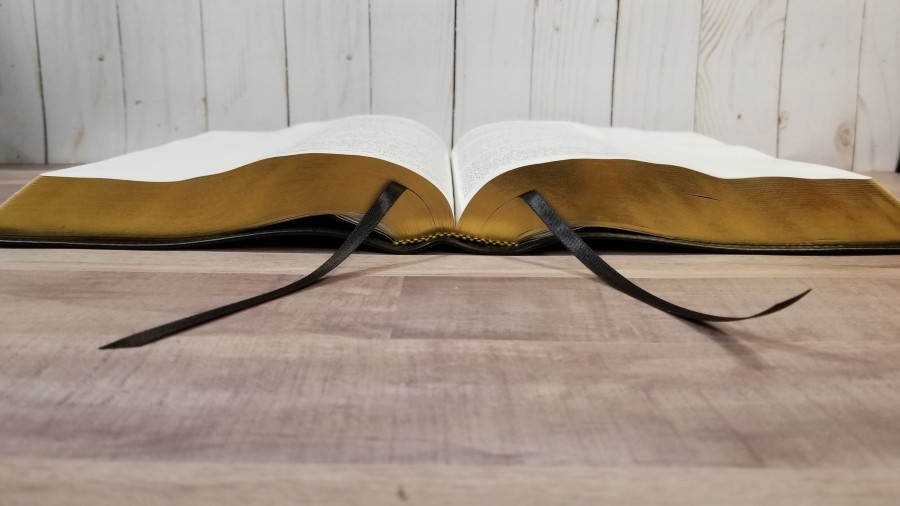
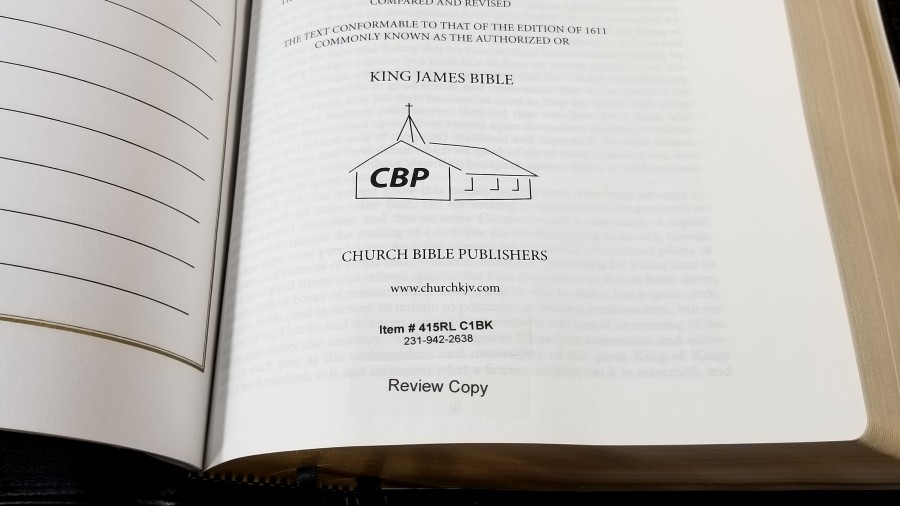
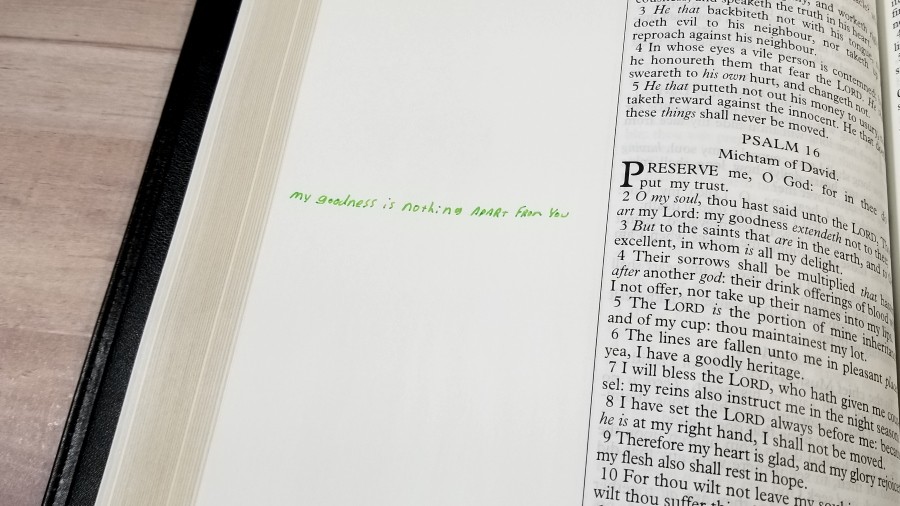
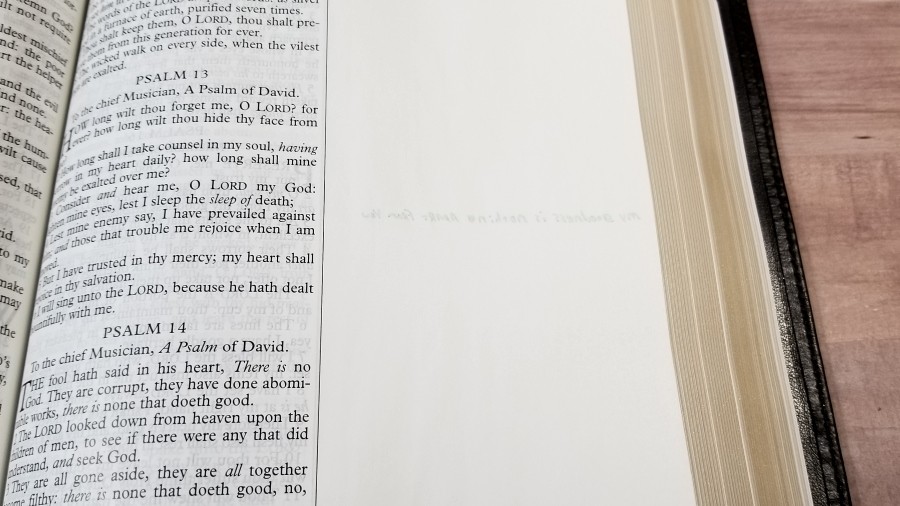
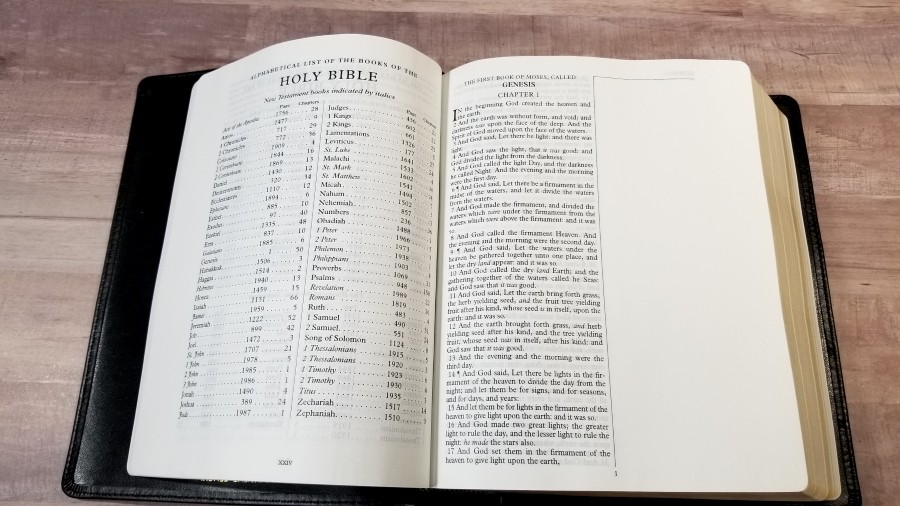
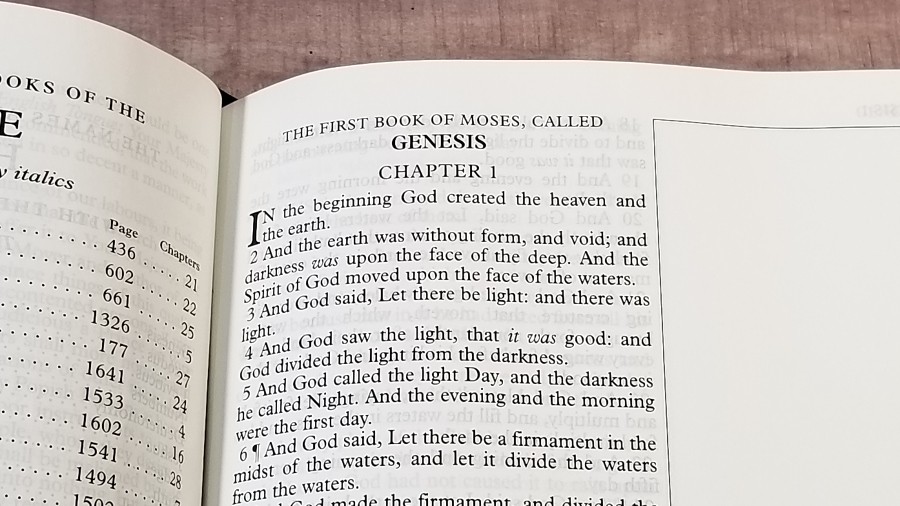
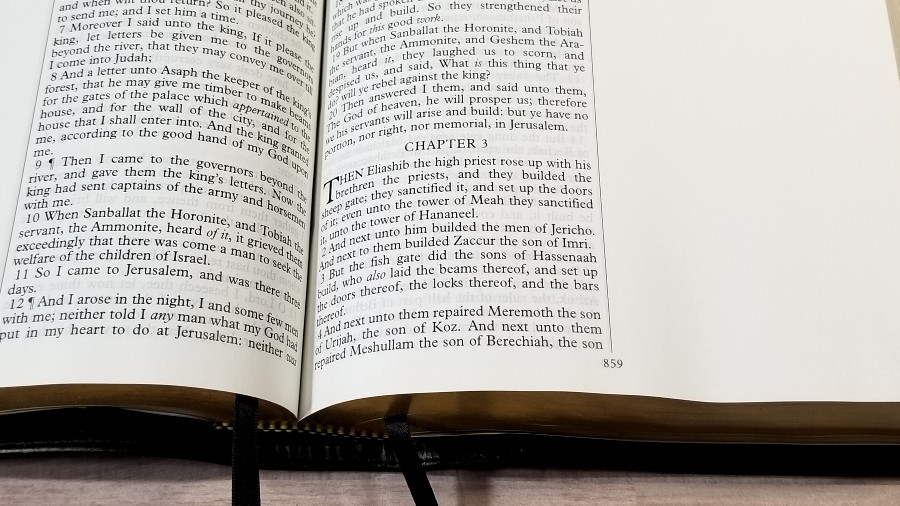
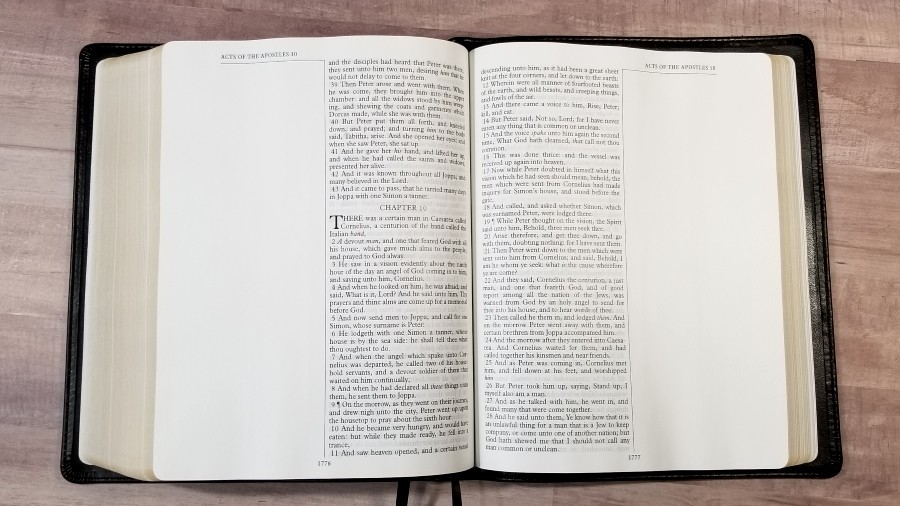
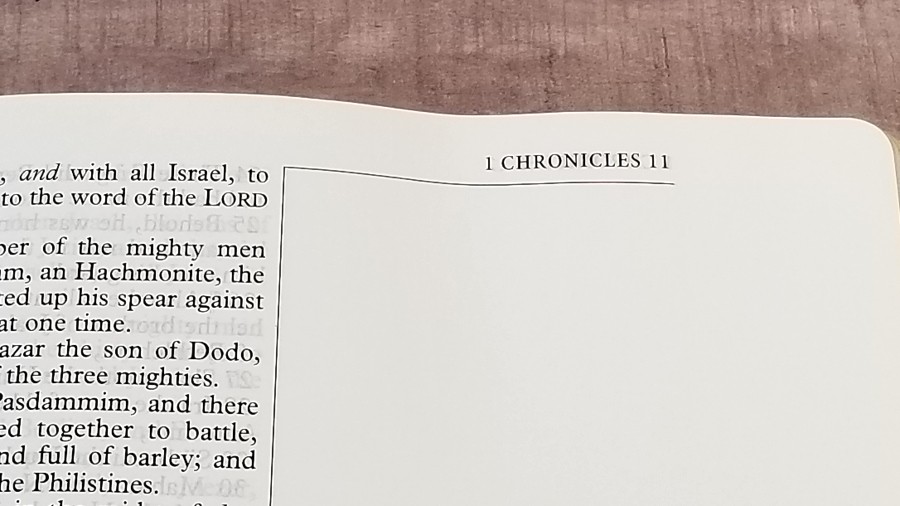
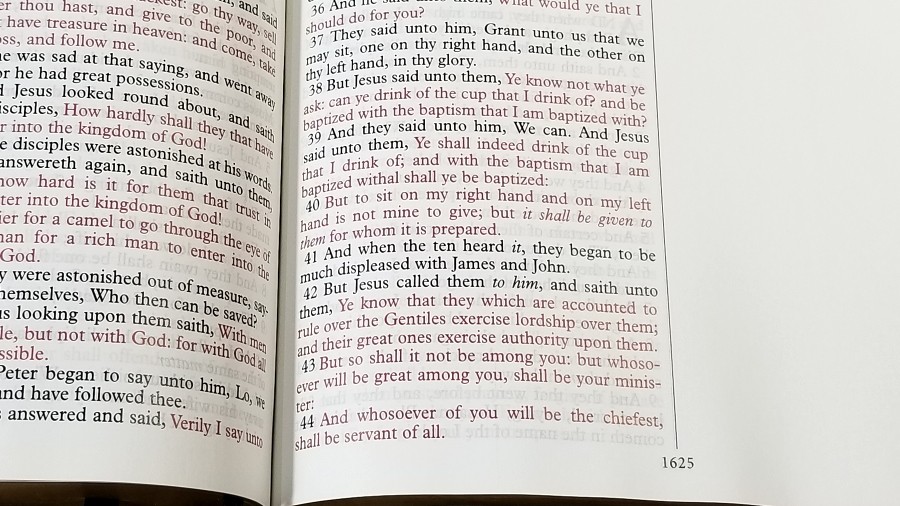
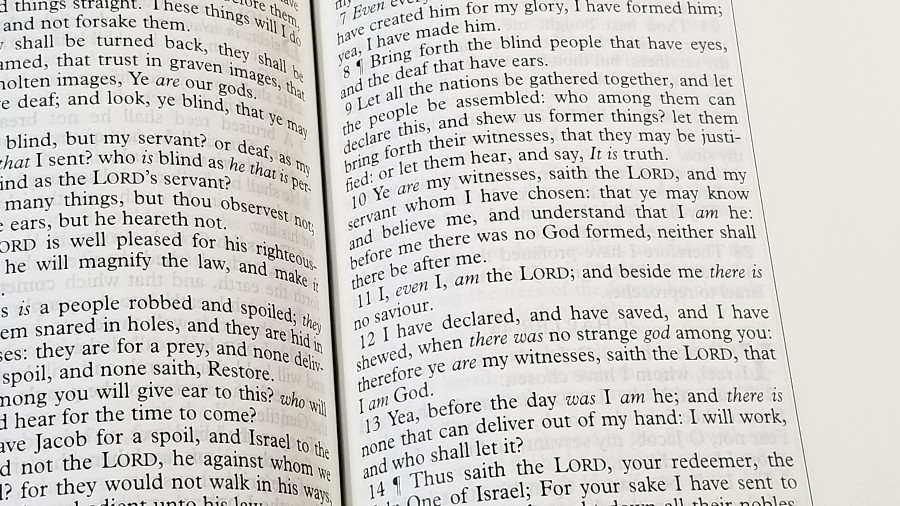
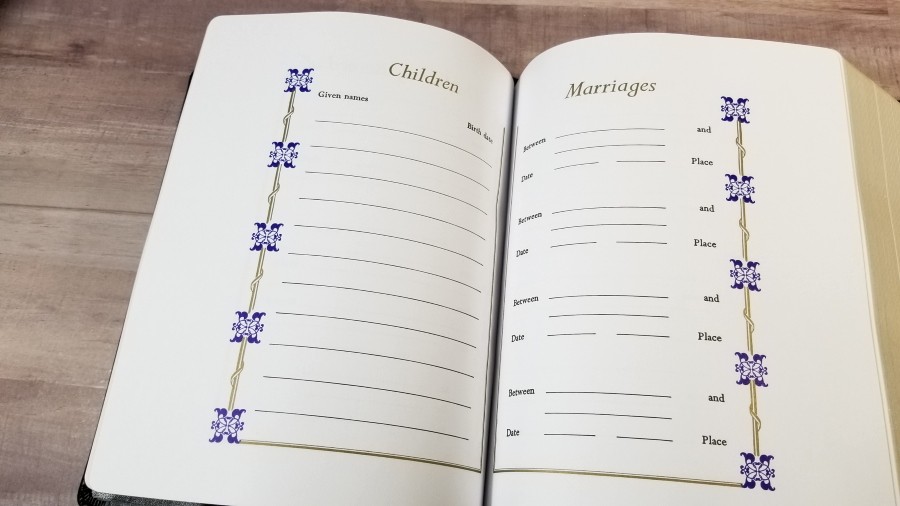

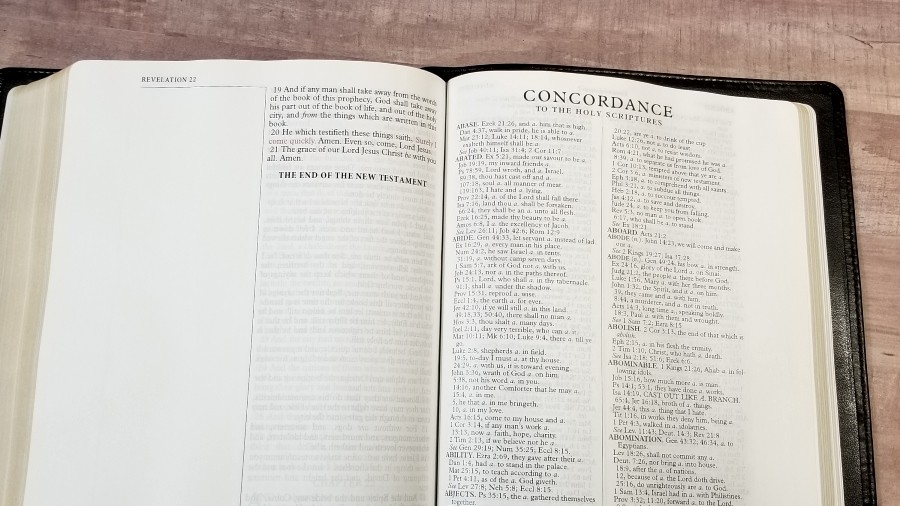
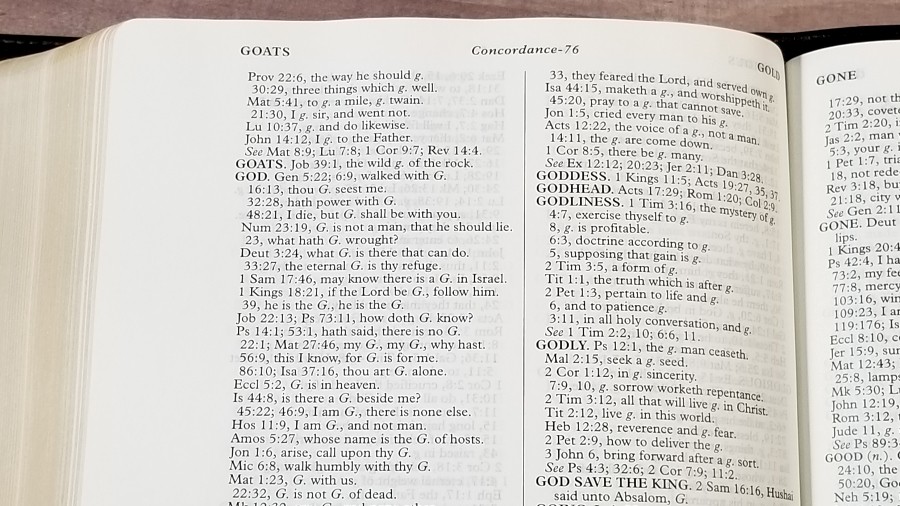
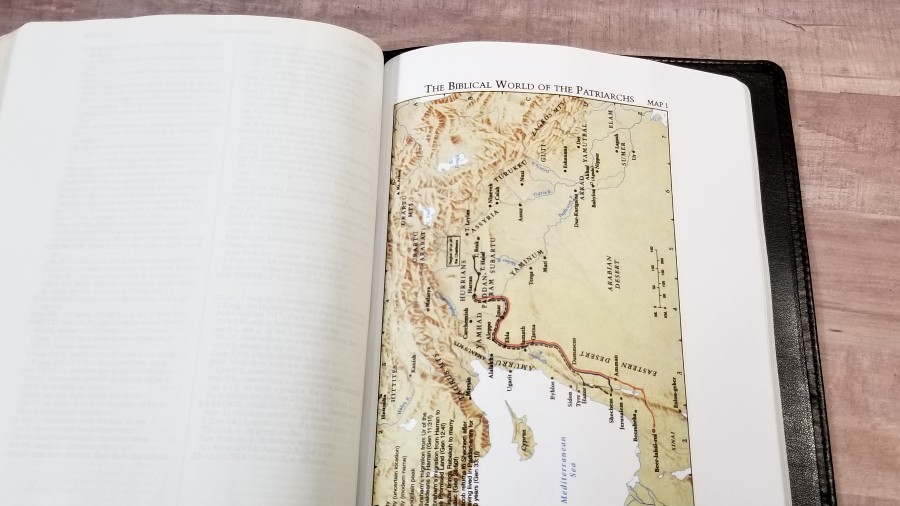
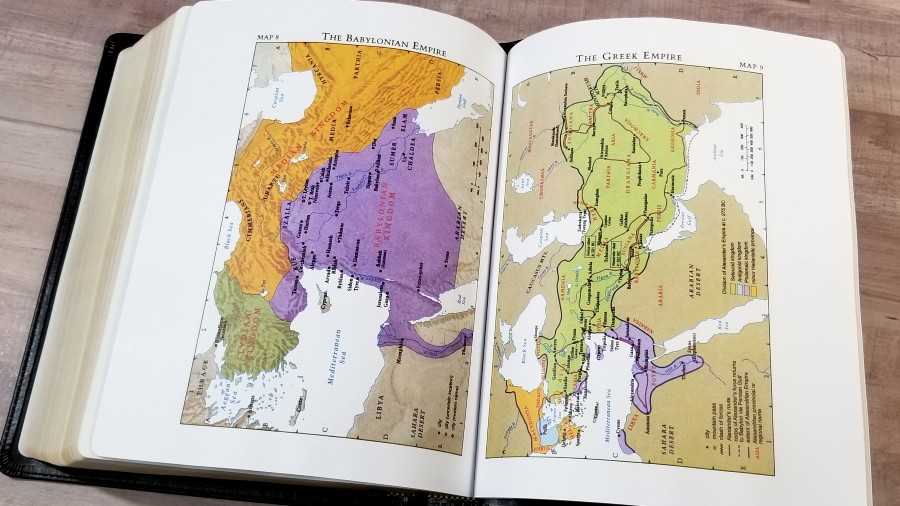

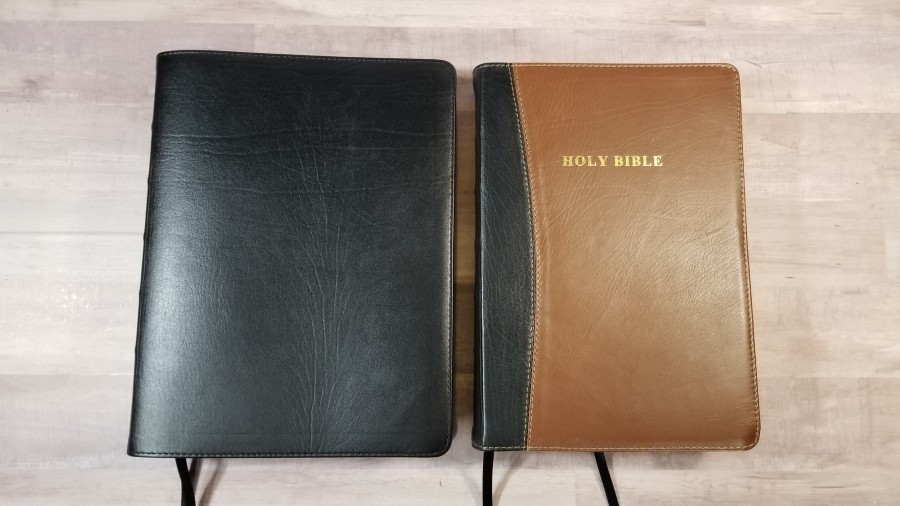
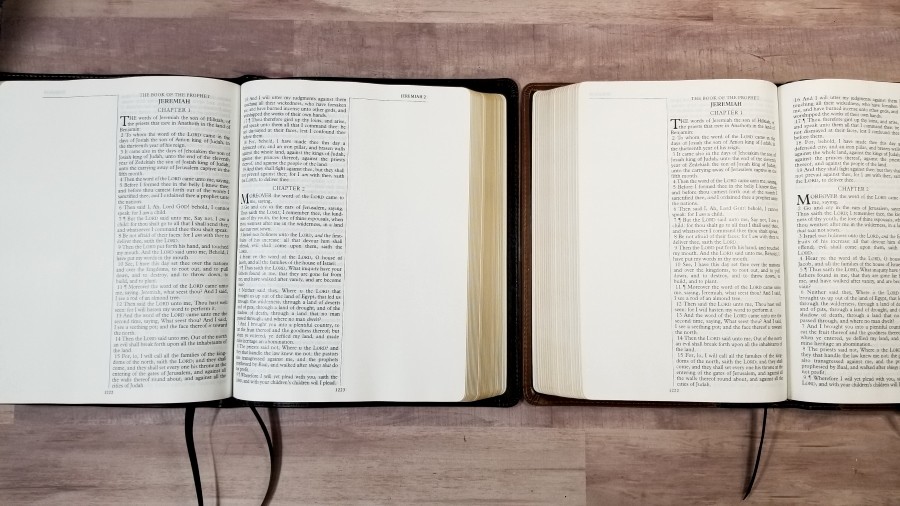
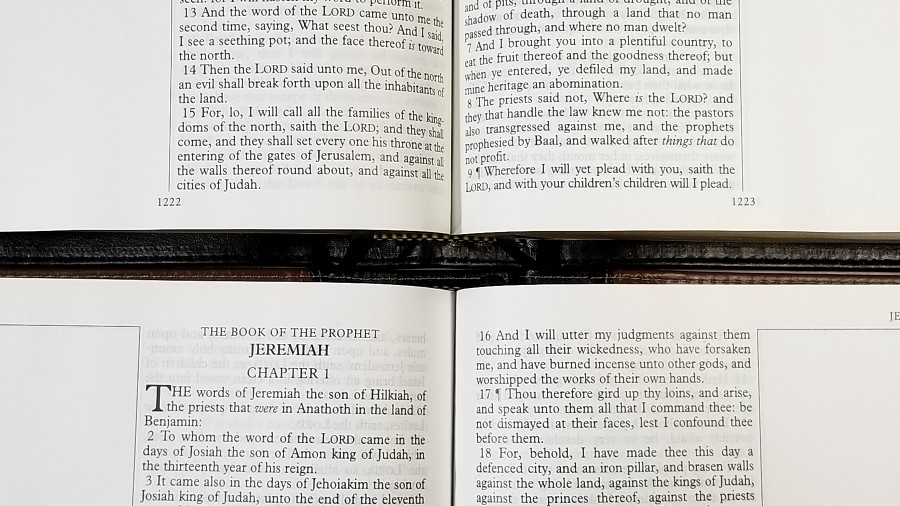
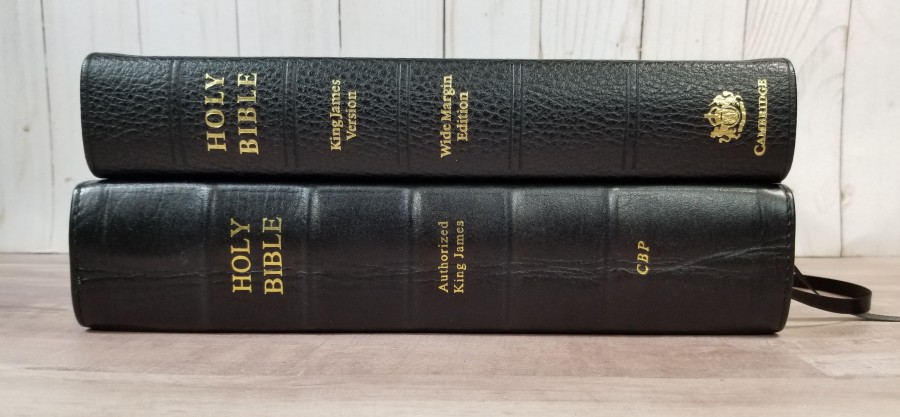
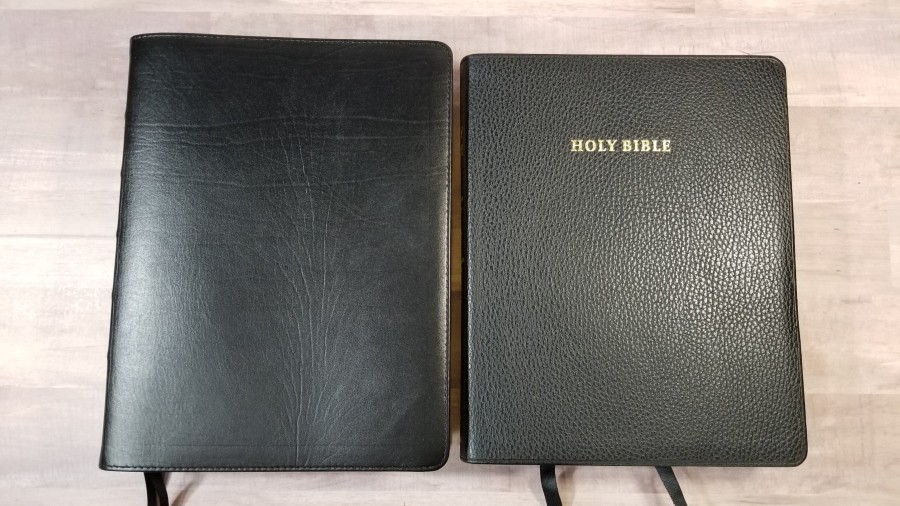
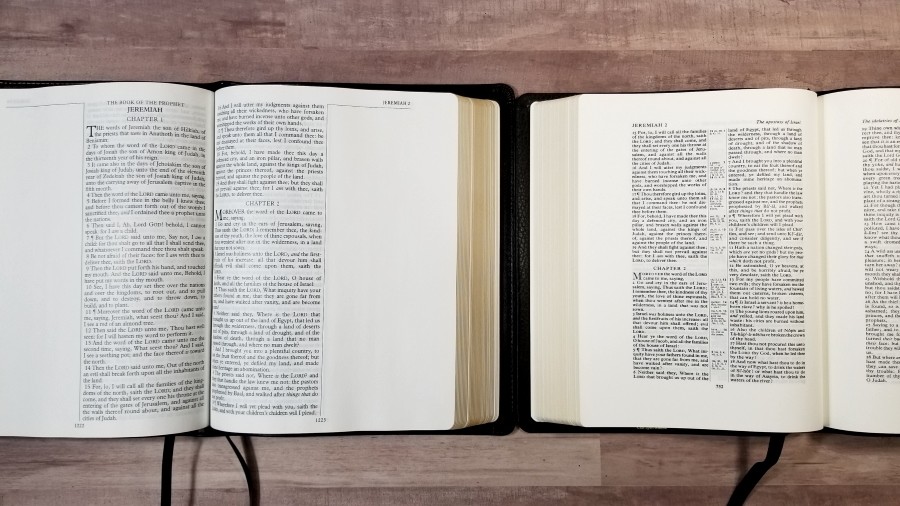

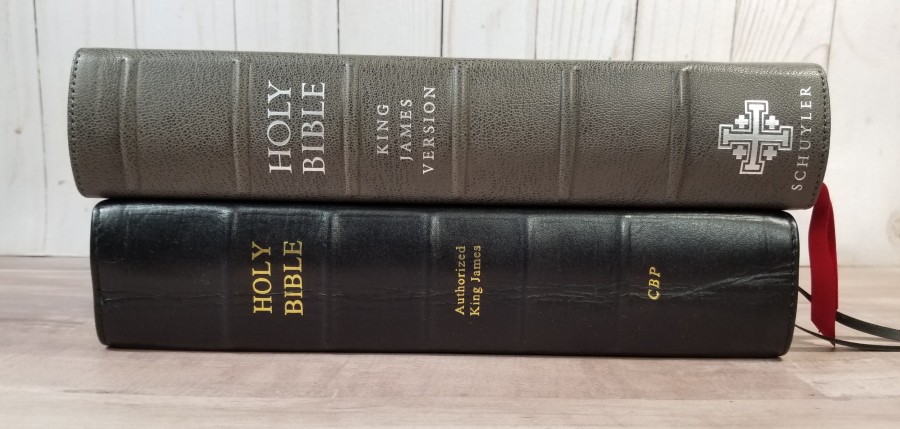
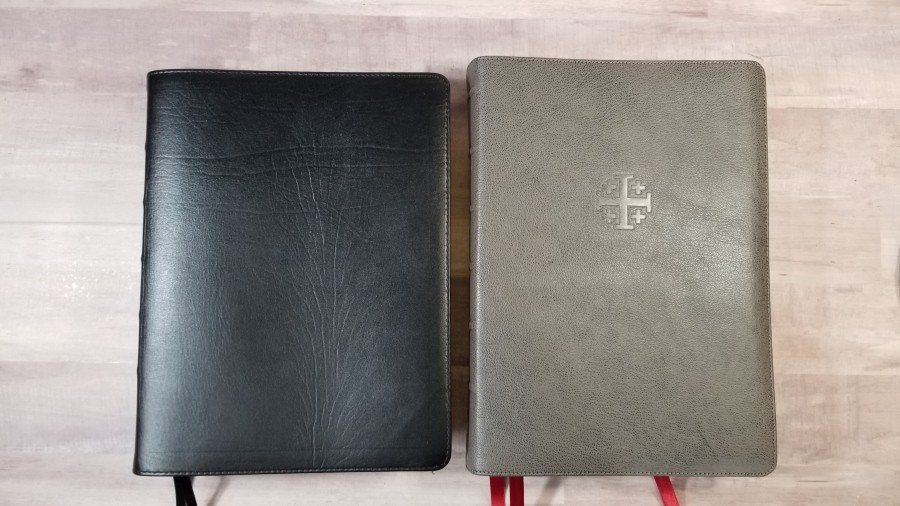
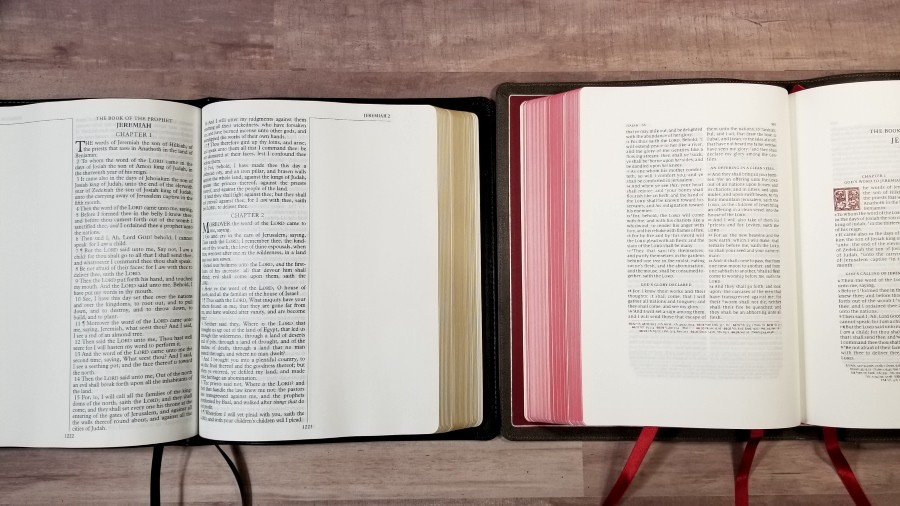
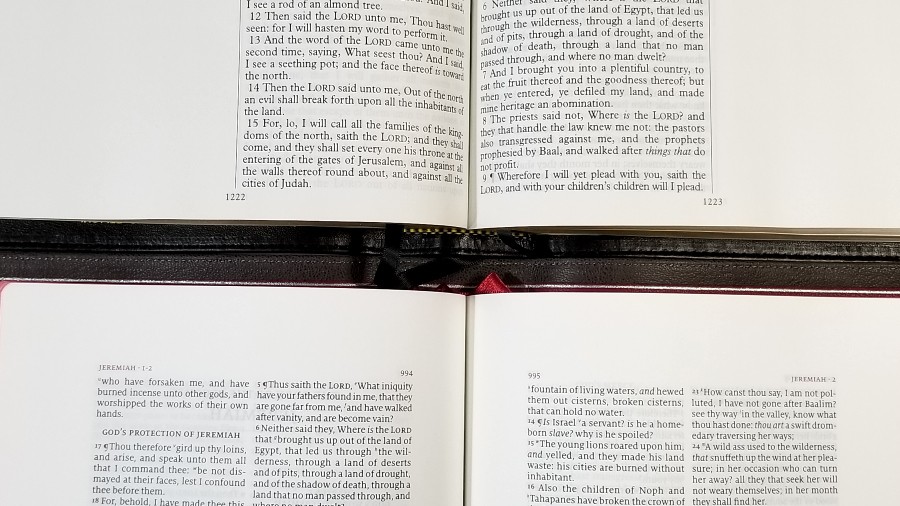
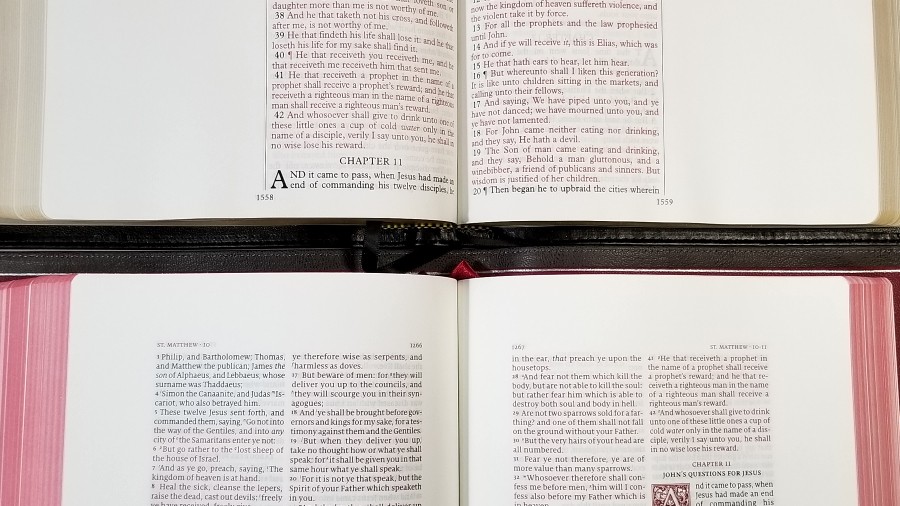
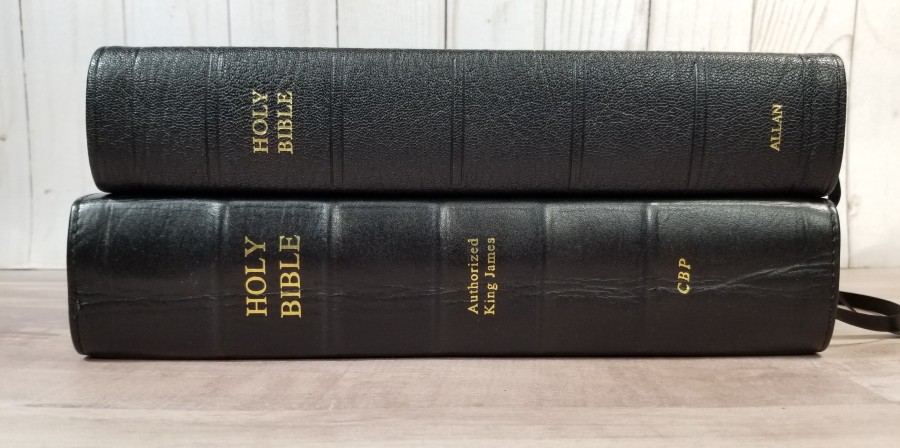
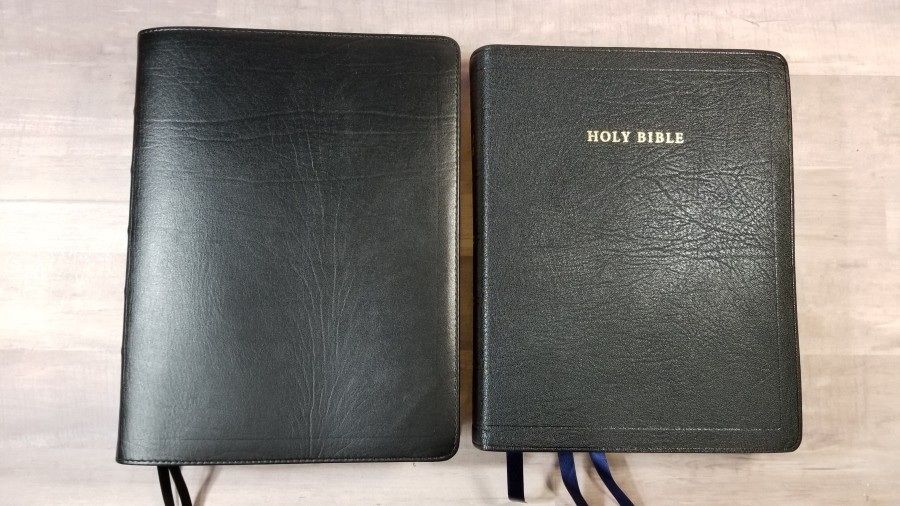
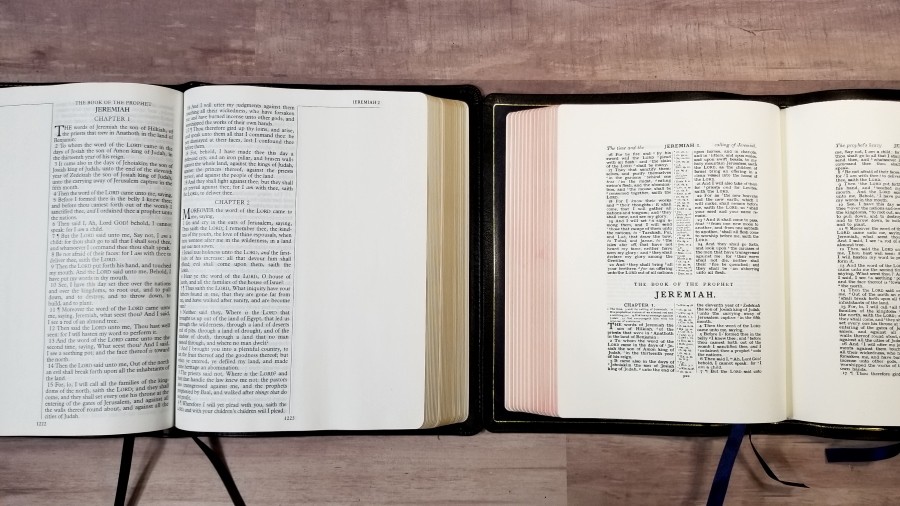
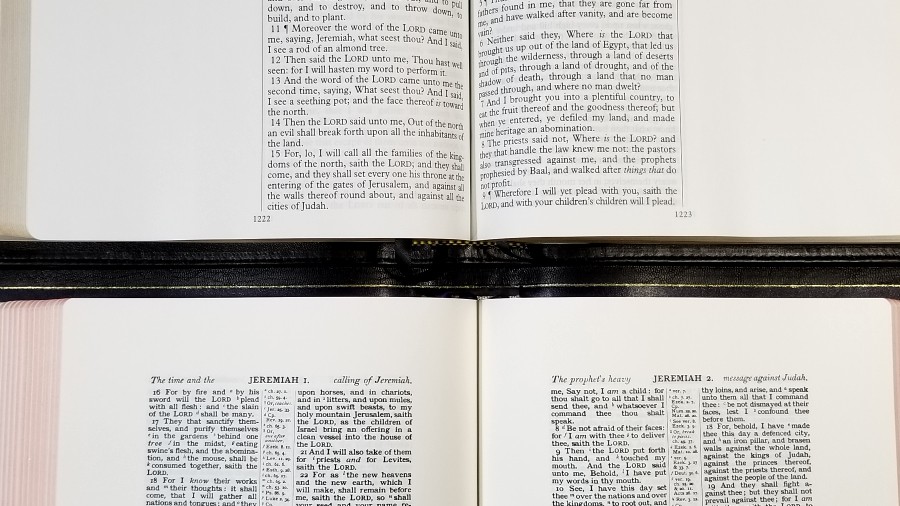
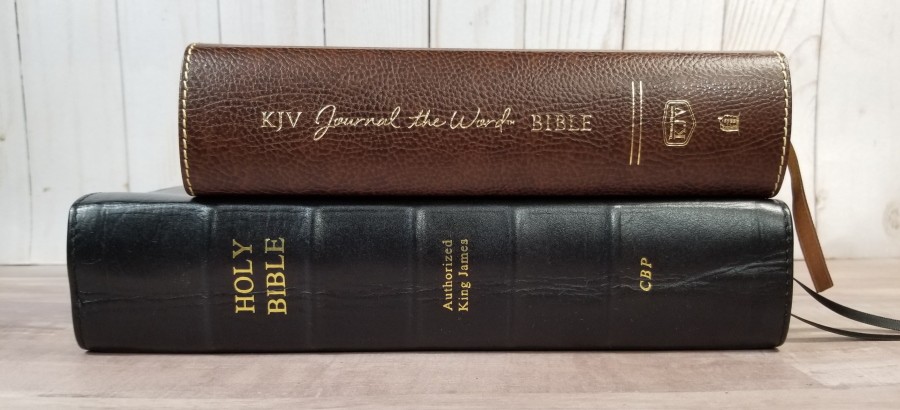
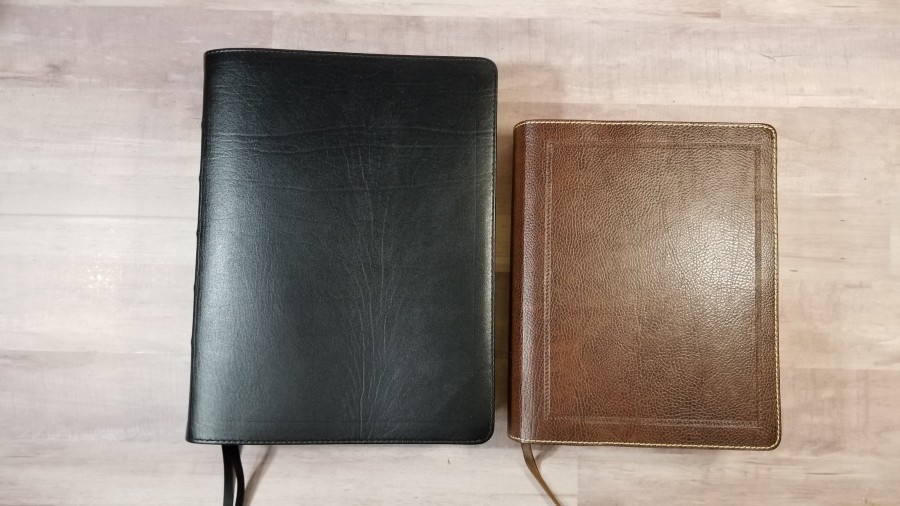
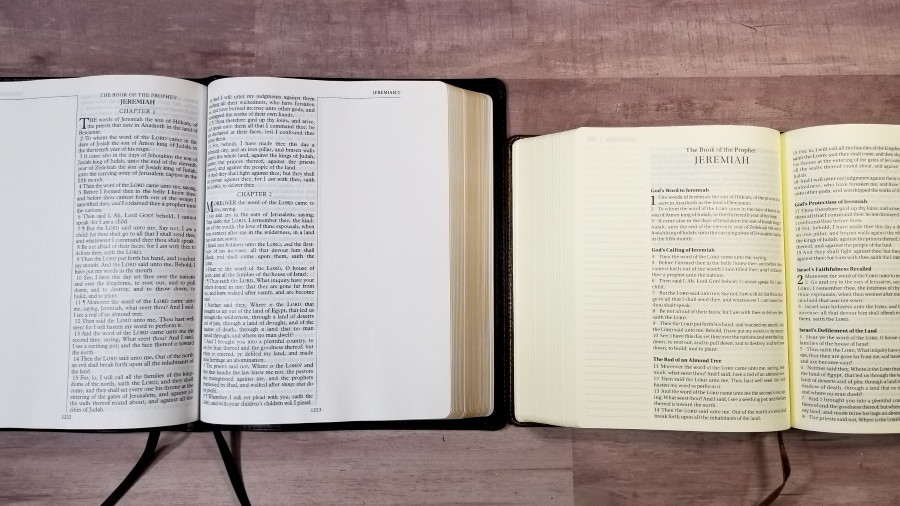
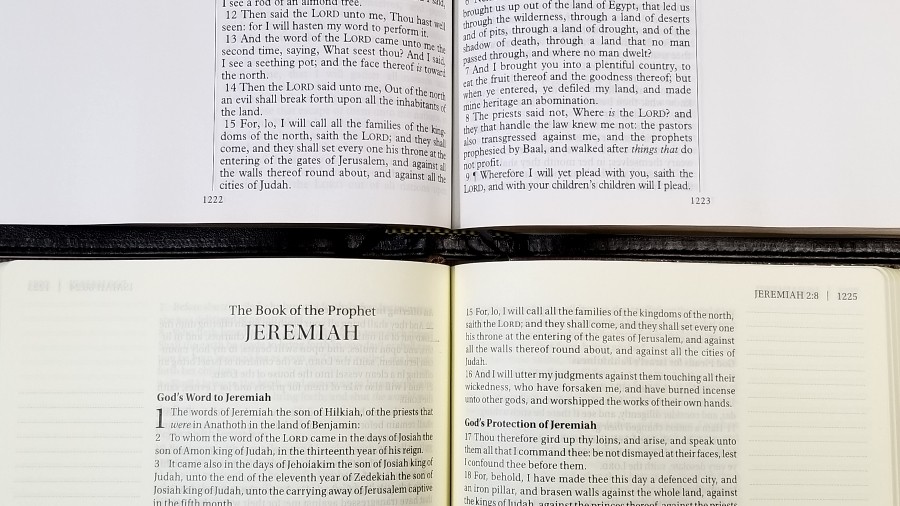
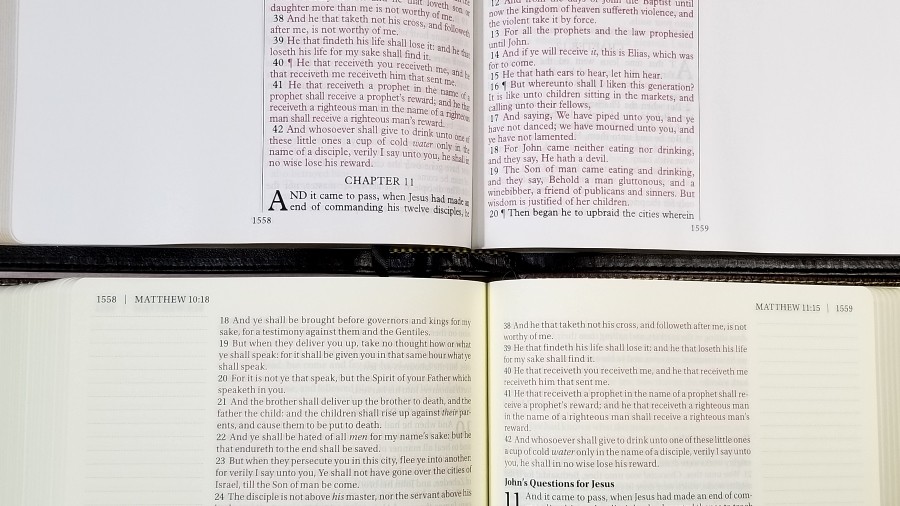


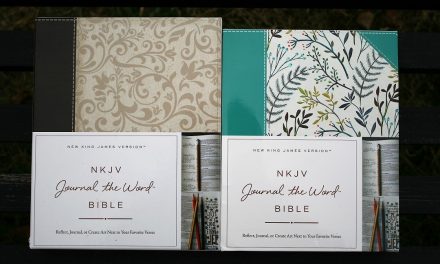
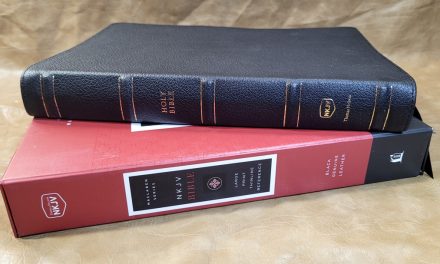
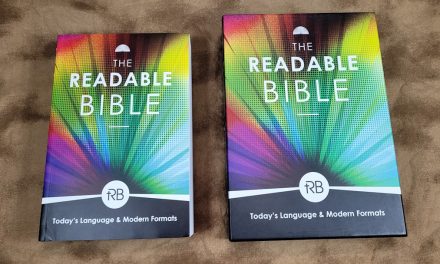







Randy,
Two questions unrelated to this post:
1. Do you have any advice (and would you consider doing a post) concerning how to care for, extend the life of and properly store premium high quality Bibles? I’m thinking of aspects such as: whether there are oils or other substances that should be periodically applied to the leather, how to deal with excessive moisture (and excessive dryness) depending on where one lives, avoiding too much light (or too much damp darkness), etc etc. The Bibles are obviously made to be used and will eventually wear down, but that doesn’t mean we shouldn’t take steps to prevent unnecessary damage from the elements, especially if there are ways to prevent it. If you have thoughts on this, it would be great to hear them.
2. Do you have any views on whether the major premium Bible publishers should issue stand-alone “helps” (the concordances, subject indexes, name indexes, maps, etc.)? I can think of several reasons for it: (a) Sometimes the font size of the concordances are too small (e.g. Schuyler Canterbury WM, Allan Cyclopedic Concordance in the Brevier, etc.). (b) Having them in a separate volume is actually more efficient in that it lessens the need to flip back and forth from one’s place in the Bible text. Something like the Thompson Chain Reference concordance would be very convenient to have alongside that Bible text instead of having to flip back and forth constantly as one needs to do with them in one volume. I guess the argument against it is that anyone who might require it already has multiple such Bibles and can just use two at once to achieve the same purpose… However, it would free certain combinations up: Choosing to carry a text only Bible plus a concordance when needed, or leaving the concordance at home when not needed, etc etc. Don’t know if you have any views on this. The publishers would probably take your voice seriously if you think it is a good idea.
Thanks in advance for any thoughts you care to share.
You’re reviews, written and video, are very helpful and appreciated.
Hi Daniel,
I’m glad you like the reviews.
1. The information I’ve gotten from publishers and Bible leather companies is it’s best not to use leather products on Bibles. The oils in your hands is the best conditioner, so the best way to take care of a Bible is to use it. For storage, I recommend laying the down rather than standing them up. Standing them allows the spine to sag. I leave mine in their boxes. It’s best to only stack them 3-4 high in a place that doesn’t draw moisture.
2. I’d love to see publishers provide stand-alone materials. I have seen a few (the cyclopedic index in the Brevier Clarendon, for example). I like the idea of using the materials with any Bible. I’ll be sure to pass this along.
Randy
Thanks very much for your response, Randy. Very helpful and good to know about Bible care and storage.
Will be interesting to see if any of the publishers think standalone reference materials would have a good market.
Cheers,
Daniel
I did a little bit of poking around and there are indeed some editions of the standalone Oxford Cyclopedic Concordance floating around. It was published as a separate book in 1947.
It is also available in PDF format at the following link. To get the full version costs $8.99, but it is a very large, readable font, as you can see from the free file, which includes about 80% of the whole thing. But you have to pay to get the full file.
https://www.forgottenbooks.com/en/books/TheOxfordCyclopedicConcordance_10441285
Awesome! Thanks for the link. This is an excellent resource. I saw it at a used bookstore a year ago and didn’t get it. I’ve looked for it ever since.
Apologies for multiple, piecemeal comments on this topic. I see that Allan does offer a pocket concordance, not leather bound and very small size. So this is a nice to-have, but it does not solve the readability problem as the font on this item is probably extremely small.
https://www.bibles-direct.co.uk/products/view.php?id=14&c=35
Thank you for this review. I am shopping for my first wide margin that I will use weekly for preaching and teaching. I’m trying to decide weather I want a calfskin or lambskin. Between those two, which cover will last longer? I currently have an ironed calfskin Thompson chain and a CBP text only top grain cowhide.
Hi Brandon. Excellent question! I asked CBP to make sure. Here’s their response: “They are both about the same as far as being durable. The Lambskin being a softer leather is going to show the wear (i.e. scratches, scuffs) on the cover sooner.”